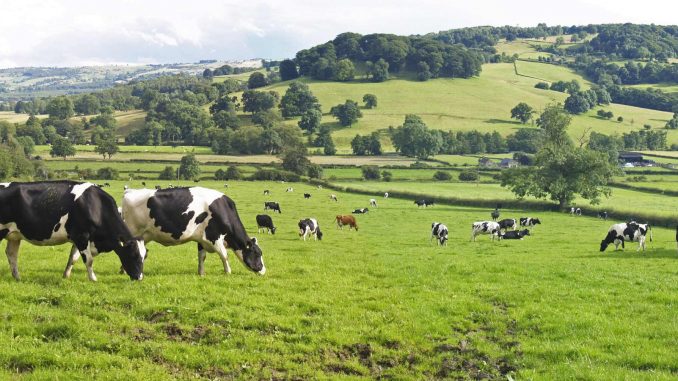
By Mohammad Zaman
Farmers have teamed up with scientists to find new ways to produce more food, improve the quality of their farmland and earn more money. With the help of nuclear techniques, they now have a method for producing high quality livestock and more crops while protecting the health of their soil for a future of more fertile farming.
“Given the importance of agriculture and the limited resources available, we need to find ways to make better use of what we have and become more efficient,” said V. Ramesh Saravana Kumar, Principal Investigator of this project facilitated by the IAEA in cooperation with the Food and Agriculture Organization of the United Nations (FAO). “With the methods demonstrated in this project, we have shown that sustainable, integrated crop-livestock farming is the answer.”
Approximately 70% of people in India rely on agriculture as a source of income. Many conventional farming methods involve inorganic fertilizers and using only one crop type each season, which puts a strain on farmers’ soil and water resources. This often leads to less productive crop yields, which in turn means less food and lowered incomes. As the already strained situation gets worse due to climate change, farmers are now in need of more efficient modes of production.
Scientists at the Tamil Nadu Veterinary and Animal Sciences University have used nuclear and isotopic techniques to study soil and water use and select and grow crops that thrive on local farms (see The Science box). They integrated their findings with effective livestock production methods involving cattle and goats to develop an easy-to-follow, crop and livestock-based organic farming system.
The project has so far resulted in an increase in organic carbon content in the soil, which gives it structure and makes it healthier and better for growing crops. Livestock reproductive performance has also gone up, including a 15% increase in the cattle’s milk production as well as significant increases in the size of the goats.
“After seeing the positive results, the farmers understand that integrated crop-livestock techniques, which also lead to more organic farming, are the only way to a healthier life. They are now more willing to take part in similar research and advice,” said Kumar. The government at all levels is also now encouraging the use of this method, he added.
A cycle of growing crops and feeding livestock
The new integrated method is based on a more organic, self-sustaining approach: after farmers grow and harvest crops, they feed livestock the leftover plant parts and grass from the fields, which results in nutrient-rich dung and urine that serves as an organic fertilizer for growing new crops. They then repeat the process. Over time, this revitalizes the soil’s structure and replenishes important nutrients for plants to grow, as well as provides a steady source of healthy feed for livestock.
“Conventional techniques are not sustainable. Instead of continuing business as usual, we can use this integrated farming approach to make the most of land and nutrient resources not just in India, but also potentially worldwide,” said Lee Kheng Heng, Head of the Soil and Water Management and Crop Nutrition Section of the IAEA.
Ten other countries are now also testing, developing and implementing this integrated livestock-cropping system under the umbrella of this project. So far, in addition to the success in India, Argentina, Brazil, Indonesia, Kenya and Uganda have also been showing promising results.
“What is especially encouraging with these techniques is that they are not limited to certain geographical areas or climates. If land is suitable for crop cultivation, it’s suitable for integrated crop-livestock practices,” Heng said. “This project has demonstrated that this integrated farming approach will have a significant impact on the future of agriculture in India and worldwide.”
THE SCIENCE
To confirm the effectiveness of the integrated crop-livestock approach, scientists use nuclear techniques involving the nitrogen-15 and carbon-13 isotopes. Nitrogen-15 and carbon-13 are stable isotopes, and scientists are able to track these isotopes to measure, for example, how efficiently crops consume nitrogen.
Scientists do this by introducing samples of nitrogen-15 into the soil around the crops. Over several months they observe how much nitrogen-15 is absorbed by the plants. This provides crucial information about how efficiently the crops use the nutrients.
Similarly, scientists add samples of carbon-13 to the soil to assess soil quality. As nutrients are recycled in the soil, organic carbon content goes up. Scientists can measure the changes in organic carbon content by tracking the carbon-13.

Leave a Reply